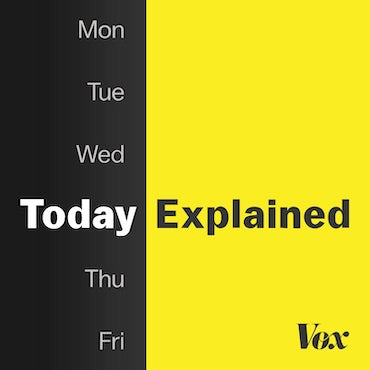Shedding light on both sides of the shale story
-
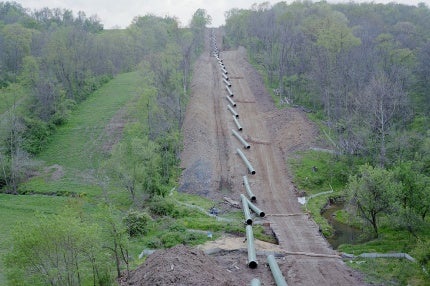
<p>A natural gas pipeline under construction in Franklin County. (Noah Addis/Marcellus Shale Documentry Project)</p>
-

<p>A Marcellus Shale well in the Tiadaghton State Forest in Lycoming County, Pa. The state took in close to $400 million in gas-drilling leases over a four-year period, mainly in places like Tiadaghton State Forest. (Martha Rial/Marcellus Shale Documentary Project)</p>
-

<p>Water on fire because of the natural gas bubbling up from a natural spring. The gas showed up in the spring after David Headley's property was fracked in Smithfield, Pa. He discovered the bubbles when horses he owned stopped drinking water from this location. (Scott Goldsmith/Marcellus Shale Documentary Project)</p>
-
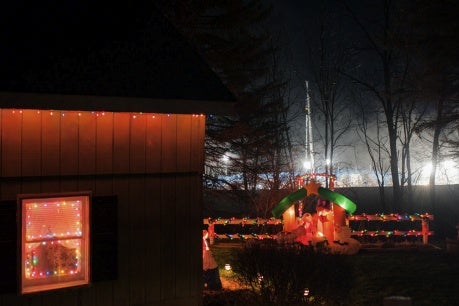
<p>Bright lights illuminating a Halliburton fracking site next to the leaseholders' home, which is decorated with Christmas lights, in Franklin Forks, Susquehanna County, Pa. (Nina Berman/Marcellus Shale Documentary Project)</p>
-
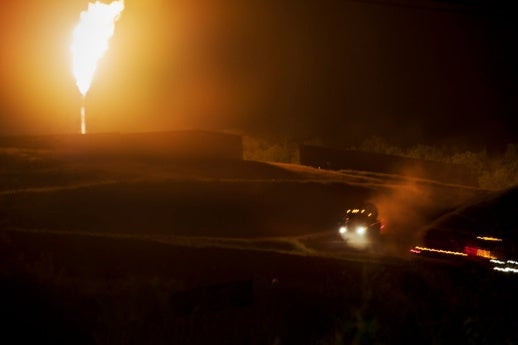
<p>A Range Resources flare near McDonald, Pa. People living close to flares are usually not warned of the contaminants they could inhale. (Scott Goldsmith/Marcellus Shale Documentary Project)</p>
-
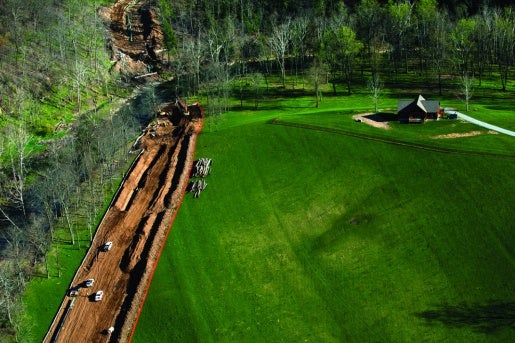
<p>Aerial view of pipeline construction in Greene County. (Martha Rial/Marcellus Shale Documentary Project)</p>
A photographic exhibit of Marcellus Shale drilling is making at stop at the Gershman Y in Center City Philadelphia. Six accomplished and award-winning photo journalists have spent several years traveling across the state to document the shale gas boom.
Cows grazing beside a pipeline, picturesque farmhouse landscapes framed by drill rigs lighting up the night sky, and the portrait of a pig-tailed toddler wearing a patriotic T-shirt are just a few of the pieces on display.
Each photographer aims his or her lens at the natural gas rush in a unique way. But the project’s leader, Brian Cohen, says they all wanted to shoot the highly polarized subject objectively.
“There’s a lot of heat generated by this subject but not a lot of light. And I wanted this project to shed some light. It’s a very complex story,” he said. “It’s very nuanced. It’s not black or white.”
The exhibit includes shots of residents who have benefited from gas drilling as well as those who have suffered.
“Anybody who tells you that natural gas drilling is all good, all the time, is not telling you the whole story,” he says. “And anybody who tells you it’s all bad all the time is not telling you the whole story either.”
Cohen says those on opposite sides of the natural gas drilling debate could interpret the same photograph in two different ways.
One perspective, however, is missing from the show — intimate shots of the gas industry.
Despite repeated attempts, Cohen says, gas drillers would not participate in the project.
The show will continue through mid-February.
WHYY is your source for fact-based, in-depth journalism and information. As a nonprofit organization, we rely on financial support from readers like you. Please give today.

